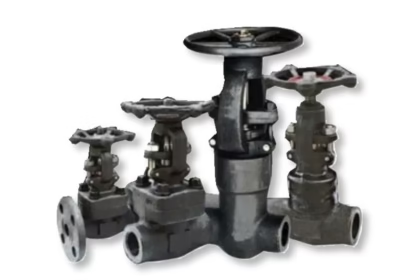In industries where equipment is constantly exposed to friction, impact, and wear, durability is not just a desirable feature—it’s a necessity. From mining trucks carrying tons of rock to construction machinery working on rough terrain, the materials used to build and maintain this equipment must be able to withstand extreme working conditions. This is where certain high-strength materials have proven to be indispensable, helping companies reduce downtime, cut repair costs, and improve productivity.
One of the most trusted materials in such demanding environments is abrasion resistant steel. Known for its exceptional hardness and ability to resist surface wear, this type of steel has become a go-to choice for manufacturers and engineers working in heavy-duty sectors. Its special properties make it ideal for applications where standard steel would quickly wear down, ensuring machinery stays operational for longer periods with minimal maintenance.
What Makes Abrasion Resistant Steel Different?
The main difference between abrasion resistant steel and conventional steel lies in its hardness, toughness, and composition. It is typically made with added alloying elements like carbon, manganese, and sometimes chromium or boron, which improve its wear resistance. This allows the steel to withstand constant sliding, grinding, or impact from rough materials such as rocks, sand, or debris without degrading quickly.
The Brinell hardness number (BHN) of abrasion resistant steel is significantly higher than that of standard structural steel. Depending on the grade, it can range from 200 BHN to over 500 BHN. This hardness gives it a longer service life in high-wear situations, making it a cost-effective choice for industries that rely on heavy-duty equipment.
Key Industries That Depend on Abrasion Resistant Steel
- Mining and Quarrying
In mining operations, equipment such as dump truck beds, chutes, crushers, and conveyors are in constant contact with sharp rocks and minerals. Abrasion resistant steel ensures these components can operate for longer without needing replacement. - Construction and Earthmoving
Bulldozers, excavators, and loaders work in environments filled with sand, gravel, and other abrasive materials. Using this steel in their buckets, blades, and liners significantly improves durability. - Agriculture
Farming equipment, such as ploughs, harrows, and grain handling machinery, benefit from abrasion resistant steel’s ability to withstand soil, seeds, and other abrasive substances. - Cement and Steel Manufacturing
These industries deal with constant material handling and processing, where high levels of wear occur in hoppers, mixers, and grinding mills.
Advantages of Using Abrasion Resistant Steel
1. Extended Equipment Life
The most obvious benefit is longevity. Components made from abrasion resistant steel last significantly longer than those made from standard steel, reducing the frequency of part replacements.
2. Lower Maintenance Costs
With reduced wear and tear, businesses spend less on repairs, maintenance, and downtime. This is particularly important in industries where every hour of equipment downtime can result in substantial financial losses.
3. Improved Safety
When equipment components fail due to wear, they can pose safety risks to workers. Stronger, more durable materials help maintain safe working conditions.
4. Better Performance
Because it maintains its structural integrity under extreme conditions, machinery fitted with abrasion resistant steel can operate more efficiently, improving overall productivity
Common Grades of Abrasion Resistant Steel
There are several grades available, each designed for specific applications and levels of wear resistance:
- AR200 & AR235: Lower hardness, better formability, ideal for moderate wear applications.
- AR400: A popular choice for heavy-duty applications, offering a good balance between hardness and flexibility.
- AR500: Known for its extreme hardness, often used in situations where maximum wear resistance is critical.
- AR600: The hardest option, used in highly specialized applications.
Choosing the right grade depends on the type of wear (impact, sliding, or both) and the working environment.
Applications in Heavy-Duty Industries
- Truck Beds and Dump Bodies – Handles abrasive loads without rapid wear.
- Excavator Buckets and Loader Blades – Extends service life in construction and mining.
- Chutes, Hoppers, and Feeders – Reduces wear in material handling operations.
- Crusher Liners and Screens – Improves efficiency in crushing plants.
- Agricultural Equipment – Withstands constant soil and crop abrasion.
Factors to Consider When Choosing Abrasion Resistant Steel
- Type of Wear – Is it mainly sliding wear, impact wear, or a combination?
- Formability and Weldability – Some grades are harder to shape or weld, requiring specific techniques.
- Cost vs. Performance – Higher grades offer longer life but may cost more upfront.
- Operating Environment – Temperature, humidity, and type of materials handled can influence steel performance.
The Future of Abrasion Resistant Steel
With advancements in metallurgy and manufacturing techniques, abrasion resistant steel continues to evolve. Modern variants are being developed with better formability without sacrificing hardness. Some are also designed to resist corrosion alongside abrasion, expanding their use in marine and chemical environments.
Additionally, as industries push for more sustainable solutions, the extended life span of abrasion resistant steel reduces waste and the need for frequent replacements, aligning with eco-friendly manufacturing goals.
Conclusion
For industries that demand the toughest, longest-lasting materials, abrasion resistant steel stands out as the first choice. Its unmatched wear resistance, combined with cost savings, improved safety, and enhanced productivity, makes it a critical material for heavy-duty applications. Whether in mining, construction, agriculture, or manufacturing, the decision to use abrasion resistant steel is not just about durability—it’s about building a stronger, more efficient future.

